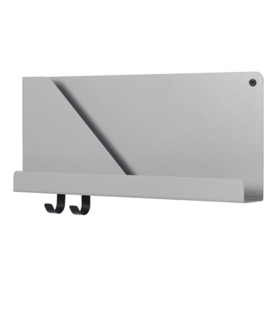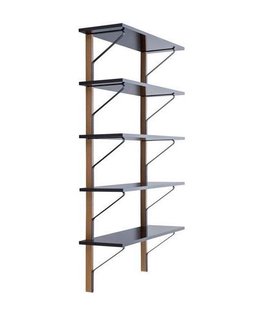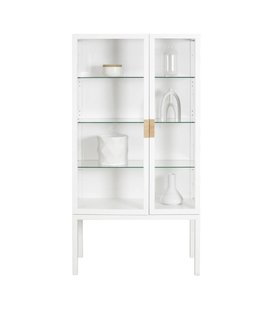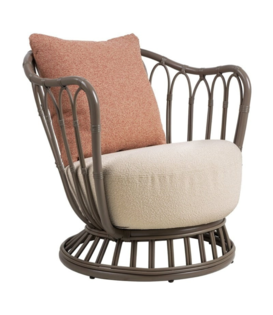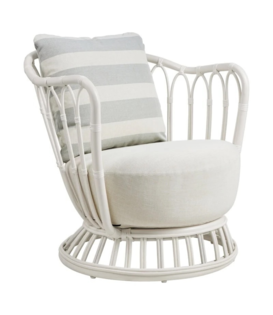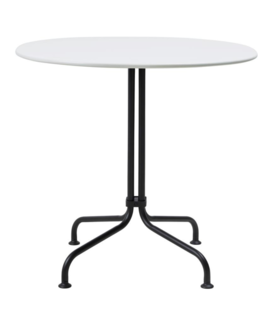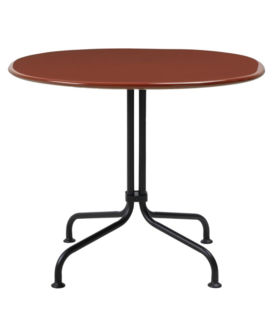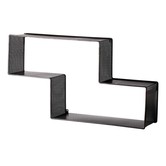
- Gratis verzending NL/B vanaf €100,-
- Nordic New bestaat 25 jaar
- Showroom 6 dagen p. week open van 10-17.00
- T 085 1303619 - info@nordicnew.com
GUBI MATEGOT DEDAL SHELF.
Design by Mathieu Mategot.
"The Danish brand Gubi is a brand with an innovative and innovative character".
Curiosity, emotion, perseverance and courage play a major role in Gubi's success. The passion for designs that know how to surprise can be found in the entire Gubi collection. Similarly in the Dedal bookshelf. Dedal is a shelf system with a diversity of perspectives. The system was designed by Mathieu Matégot as early as 1952-1954 but nevertheless still very popular and stylish.
Mathieu Matégot’s organic forms and lightness of touch in his designs create a sense of joy. At the same time he used groundbreaking and innovative techniques. This resulted in complete unique aesthetic and, above all, contemporary designs. Matégot was the first person to combine metal tubing with perforated sheet metal – “rigitulle”, a pairing that characterises his work. His most famous piece, The Nagasaki Chair, is included in the permanent exhibition at the Vitra Design Museum.
The Matégot Dedal book shelf is made from perforated powder-coated steel plate. Available in Smoke green, Prairie sand, Rose, Soft black, Cream white, Ruby red, Mustard gold, and Stone grey.
The graphic outline of the Dedal shelf allows multiple shelves to be grouped together and form new designs.
Dimensions: 89 w x 19.5 d x 48.5 cm.
About the designer:
finishing his studies at Budapest's School of Art and Architecture. In 1939, Matégot signed up as a volunteer for the French army but was held as a prisoner in Germany until he escaped in 1944. This wartime captivity was an important time, career-wise, for Matégot as it was here he was able to familiarise himself with the innovative material and technique, Rigitulle - which later would become the characteristic trait of his.
Mathieu Matégot is most known for this groundbreaking material and technique, which he named Rigitulle, where metal tubing is combined with perforated metal sheet. Like fabric, Rigitulle could be bent, folded and shaped to give the furniture he designed transparency, weightlessness and everlasting modernity. Mathieu Matégot even patented this material and teqnique and set up his own production so that he could apply it into his design. Like many of his peers, Matégot travelled the world in search of inspiration, techniques and upon return transformed these impressions into his own unique designs and interpretations. Whether it was industrial processes or aesthetics, he always collected and interpreted.
In the 1950's - and for a decade and a half - that he devoted to the design of furniture and interior accessories, he created a wide range of distinctive designs that today is considered iconic and contemporary. To ensure quality in the production of his own designs, Matégot set up two of his own workshops - Société Mategot, one in Paris that employed up to twenty workers and a second in Casablanca, Morocco. Both manufactured in limited numbers for up to 400 items and continued until the beginning of 1960's when Matégot abruptly ended his production and began his work on tapestry, which he would continue for the rest of his career.
Article number: 10011219
Weight: 1000








